Notes: Birkenhead Dock station was the eastern terminus of the Hoylake Railway (HR), a 4½- mile single-track line that linked the eastern edge of Birkenhead to Hoylake via Meols. The HR was authorised to build the line on 25 July 1863. The original intention was to link Hoylake with Seacombe Ferry. This would have created a useful link between the attractive but undeveloped north Wirral coast and Liverpool. Work commenced in late 1864 but, owing to a lack of finance, the line ran only between Hoylake and a point nearly two miles from the banks of the Mersey at the western extremity of the Wallasey Pool, an area of water that was in the process of being enclosed as the Wallasey and Birkenhead Dock system. The line was completed by the middle of 1866 and was inspected on 16 June 1866. The inspector had a number of concerns, and a further inspection took place on 2 July 1866; regular services began on the same day. It is likely that some trains had run earlier as the railway had reported to the Liverpool Mercury as early as 18 June 1866 that they were open for business.
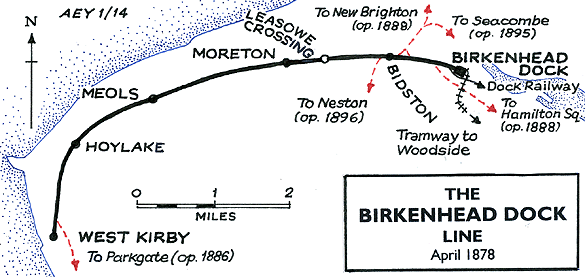 |
Birkenhead Dock station was located on the west side of Wallasey Bridge Road on the south side of the Wallasey Pool. The station had one platform on the northern side of the line. Its facilities were housed within two single-storey timber buildings located on the platform. One of the buildings housed the ticket office and a waiting room, and in the other was the refreshment room. There was a run-round loop at the station and a small turntable at the easternmost extent of the line. The station also had goods sidings on the north and south sides.
At the time of opening the HR had only one locomotive, but a service of six trains in each direction was run on Monday-to-Saturday with four each way on Sundays. The journey between Dock station and Hoylake took 20 minutes. An omnibus service ran between the station and Seacombe Ferry providing a connection with Liverpool. In the first few months the railway was well used: by August 1866 30,000 passengers had been carried.
After October 1866 passenger numbers dropped off so one train was withdrawn. By January 1867 the service was reduced to three in each direction on Monday-to-Friday, four on Saturdays and two on Sundays.
 In the summer of 1867 there was much criticism of the line in the local press. The last departure from Hoylake was at 7.00pm which was considered to be too early. During the second half of 1867 only 67,000 passengers were carried. The HR had many creditors and struggled to make its payments. On 13 February 1869 it went into receivership. In the summer of 1867 there was much criticism of the line in the local press. The last departure from Hoylake was at 7.00pm which was considered to be too early. During the second half of 1867 only 67,000 passengers were carried. The HR had many creditors and struggled to make its payments. On 13 February 1869 it went into receivership.
The Receiver decided to keep the line running in the hope of selling it as a viable business but things went from bad to worse, and on 30 June 1870 a Writ of Ejectment forced the removal of all rolling stock from the eastern end of the line. The train service was then able to run only between Hoylake and Leasowe - where there was not even a platform. Although not formally closed Birkenhead Dock station had no train service and it was out of use for over two years.
On 1 July 1872 a new company, the Hoylake & Birkenhead Rail & Tramway Company (H&BR&TC), was formed and authorised to take over the HR. As early as 1866 plans had been developed to create a tramway between Birkenhead Dock station and the ferry at Birkenhead Woodside. Because the Birkenhead Town commissioners did not permit passing loops on the line it would have proved to be unworkable and the plans were dropped. The idea was resurrected again on 19 November 1870 by the Hoylake & Birkenhead Tramway Company which was dissolved on 1 July 1872 to allow the H&BR&TC to be formed. The H&BR&TC was authorised to build a tramway 3.2 miles in length and mostly double-track between the Dock station and Woodside at the time of its formation.
The H&BR&TC reintroduced an hourly service of trains in both directions trains to Birkenhead Dock station from 23 July 1872. The first train departed from Birkenhead Dock at 9.40am; the last train departed from Hoylake at 8.20pm.
 Construction of the tramway commenced on 22 April 1873 and it opened on 6 September 1873. The tramway passed to the east of the station, running along Wallasey Bridge Road, and then turned sharply to the west, terminating on the north side of the station platform. A roof was provided over the tram terminus and cross-platform interchange allowed passengers to transfer easily between the two modes of transport. Birkenhead Dock station was probably the world’s first rail-to-tram interchange station. Construction of the tramway commenced on 22 April 1873 and it opened on 6 September 1873. The tramway passed to the east of the station, running along Wallasey Bridge Road, and then turned sharply to the west, terminating on the north side of the station platform. A roof was provided over the tram terminus and cross-platform interchange allowed passengers to transfer easily between the two modes of transport. Birkenhead Dock station was probably the world’s first rail-to-tram interchange station.
Horses for the tram services were supplied by local contractors and, within a few years, stables were built at Dock station to house them. Tram sheds were later erected at the station to the north of the tramway and reached by a triangular junction. The trams were provided by the manufacturer George Starbuck who had a factory on the route of the line at Cleveland Street. There was a good relationship between Starbuck and the H&BR&TC who allowed him to test his products on the line. On 11 May 1876 he tested a steam tram that had been built for Vienna between Woodside and Dock station.
The opening of the tramway put the railway on a much better footing as it was far easier for passengers to reach from Birkenhead and, via ferry, from Liverpool.
 At the formation of the H&BR&TC an Act had been obtained to make two extensions to the line: at the western end a 1.225 mile line to West Kirby and, at the eastern end, a 330yd line to make a connection with the Birkenhead Dock railway. The latter was important to end the physical isolation of the railway. The West Kirby extension opened on 1 April 1878 and the dock connection on 19 July 1878. The latter passed to the south of Dock station and crossed Wallasey Bridge Road via a level crossing. The tramway crossed it on the level. West Kirby became the western terminus for passenger services from Birkenhead Dock station. At the formation of the H&BR&TC an Act had been obtained to make two extensions to the line: at the western end a 1.225 mile line to West Kirby and, at the eastern end, a 330yd line to make a connection with the Birkenhead Dock railway. The latter was important to end the physical isolation of the railway. The West Kirby extension opened on 1 April 1878 and the dock connection on 19 July 1878. The latter passed to the south of Dock station and crossed Wallasey Bridge Road via a level crossing. The tramway crossed it on the level. West Kirby became the western terminus for passenger services from Birkenhead Dock station.
By the late 1870s the tramway had become very busy and was carrying far more passengers between points within Birkenhead than it was in connection with the railway. The H&BR&TC decided to sell it, and it was bought by the Birkenhead Tramways Company (BTC) for £27,500 on 12 October 1879. The price included the line, eight cars and the stables and shed at Dock station.
After the sale of the tramway the H&BR&TC re-considered its name and in 1881 it was authorised to become the Seacombe, Hoylake & Deeside Railway (SH&DR). The name suggested the railway’s aspiration to create a route to North Wales and a branch to Seacombe Ferry. The 1881 Act that authorised the name change also authorised the construction of a branch between Bidston and Seacombe. The BTC petitioned against the Act as it would result in a loss of traffic for them; railway passengers would have direct access to Liverpool by the Seacombe Ferry. Their objections were withdrawn when the SH&DR agreed to pay £500 in compensation.
 In 1882 the SH&DR obtained a further Act to build a 2.235 mile line to New Brighton. In 1882 the SH&DR obtained a further Act to build a 2.235 mile line to New Brighton.
By 1883 the Mersey Railway (MR) between Liverpool and Birkenhead, passing beneath the River Mersey, was under construction. The building of the MR prompted a number of schemes including one that would link it with the SH&DR. In its final agreed form the line, promoted by the Wirral Railway Company (WRC), was to run between a point just to the west of Dock station (passing to its south) to Birkenhead Park. The MR was to build a line from its authorised route at Hamilton Square to Birkenhead Park; an Act of 1884 authorised the line. The WRC and the SH&DR became closely linked in 1885, and on 1 October 1885 a contract was let to George Meakin and John William Dean of Birkenhead for the construction of both the Dock – Birkenhead Park and the New Brighton lines. A new Birkenhead Dock station was planned for the new line south of the original on the eastern side of Stanley Road.
The August 1887 timetable showed eighteen departures on Monday-to-Friday and nineteen arrivals. There were extra trains on Saturdays, and on Sundays there were seven departures and eight arrivals. All of the train services had tram connections to and from Birkenhead Woodside.

The line to Birkenhead Park and the New Brighton line as far as Wallasey opened on 2 January 1888. With the opening of the new lines the former HR Birkenhead Dock station closed to passengers and its replacement station opened- the new station was renamed Birkenhead North on 1 May 1926.
After closure to passengers the original Dock station became a goods facility. The tramway was cut back to Beaufort Road, there being no point in trams running as far as the former station. The tramway passed to municipal ownership in 1890 and closed in 1901.
 On 1 July 1891 the Wirral Railway (WR) was formed and it became the owner of the Birkenhead Park – West Kirby and the New Brighton lines. The WR developed its locomotive depot at the original Birkenhead Dock station. Alterations were made and sheds erected. The roof over the tram terminus was converted into a locomotive shed. At grouping on 1 January 1923 the WR became part of the London, Midland & Scottish Railway (LMS). Under the LMS the locomotive depot at Birkenhead Dock became 6A Birkenhead North. It survived until 12 March 1938 when electric services were introduced onto the West Kirby and New Brighton lines. The original station platform and buildings of 1866 survived until the closure of the shed but were demolished shortly after. The land became an area of sidings until the early 1990s, latterly being a coal depot. On 1 July 1891 the Wirral Railway (WR) was formed and it became the owner of the Birkenhead Park – West Kirby and the New Brighton lines. The WR developed its locomotive depot at the original Birkenhead Dock station. Alterations were made and sheds erected. The roof over the tram terminus was converted into a locomotive shed. At grouping on 1 January 1923 the WR became part of the London, Midland & Scottish Railway (LMS). Under the LMS the locomotive depot at Birkenhead Dock became 6A Birkenhead North. It survived until 12 March 1938 when electric services were introduced onto the West Kirby and New Brighton lines. The original station platform and buildings of 1866 survived until the closure of the shed but were demolished shortly after. The land became an area of sidings until the early 1990s, latterly being a coal depot.
By 2013 the site was in use by a skip hire company.
Tickets from Michael Stewart route map by Alan Young.
Sources:
- Railway Passenger Stations in Great Britain - A Chronology, by M Quick, RCHS 2009.
- The Wirral Railway and its Predecessors , by T B Maud 2009.
See also: The Woodside and Birkenhead Dock street tramway
& Railways at Bidston
|

dock_old.jpg)
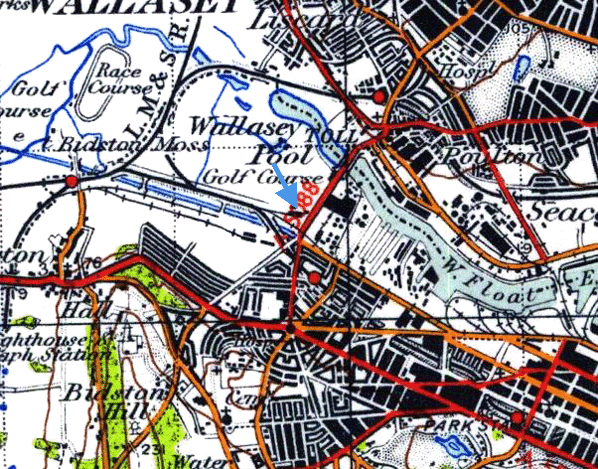
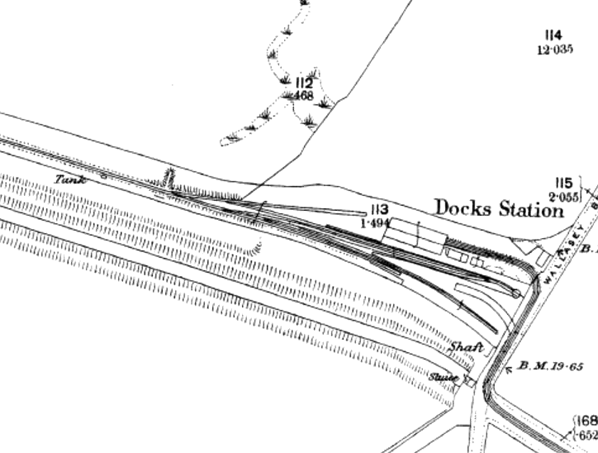
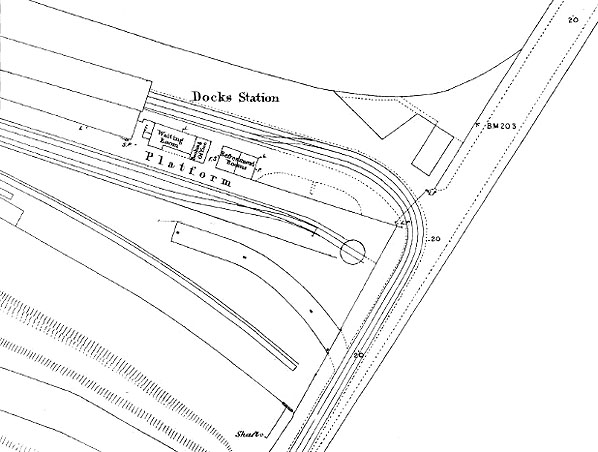
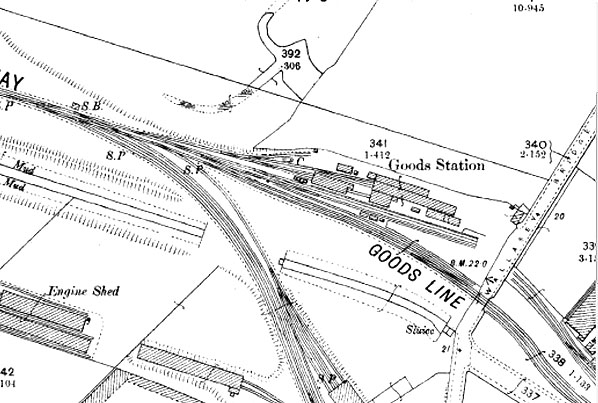
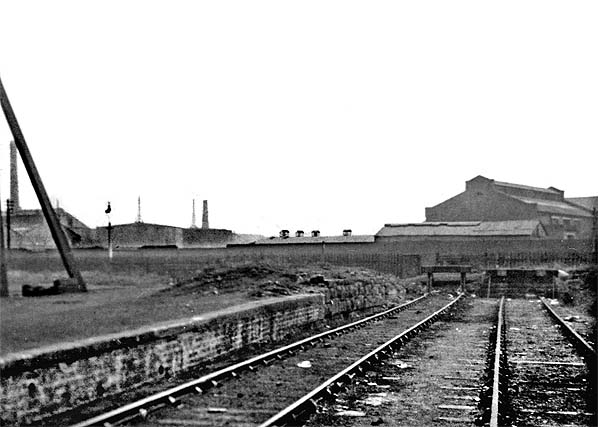
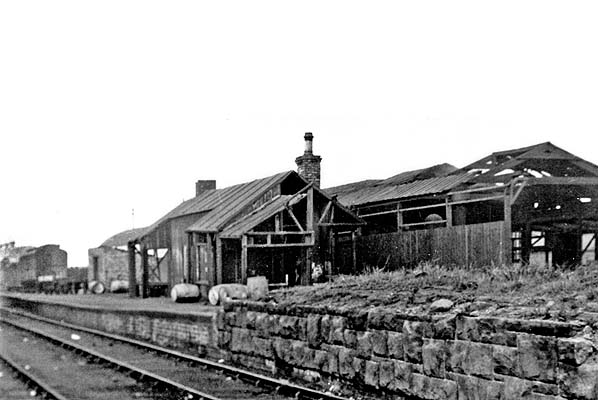
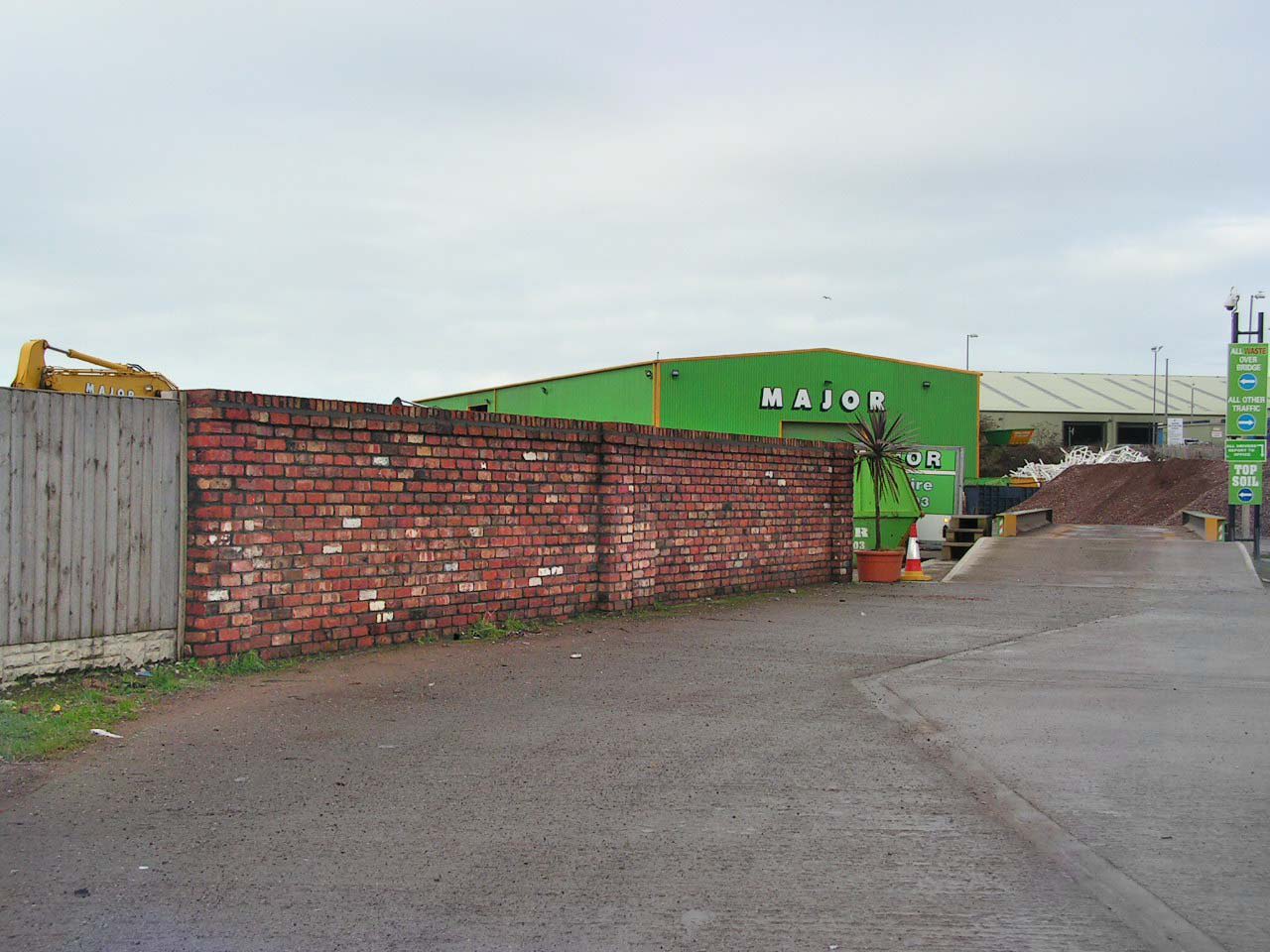
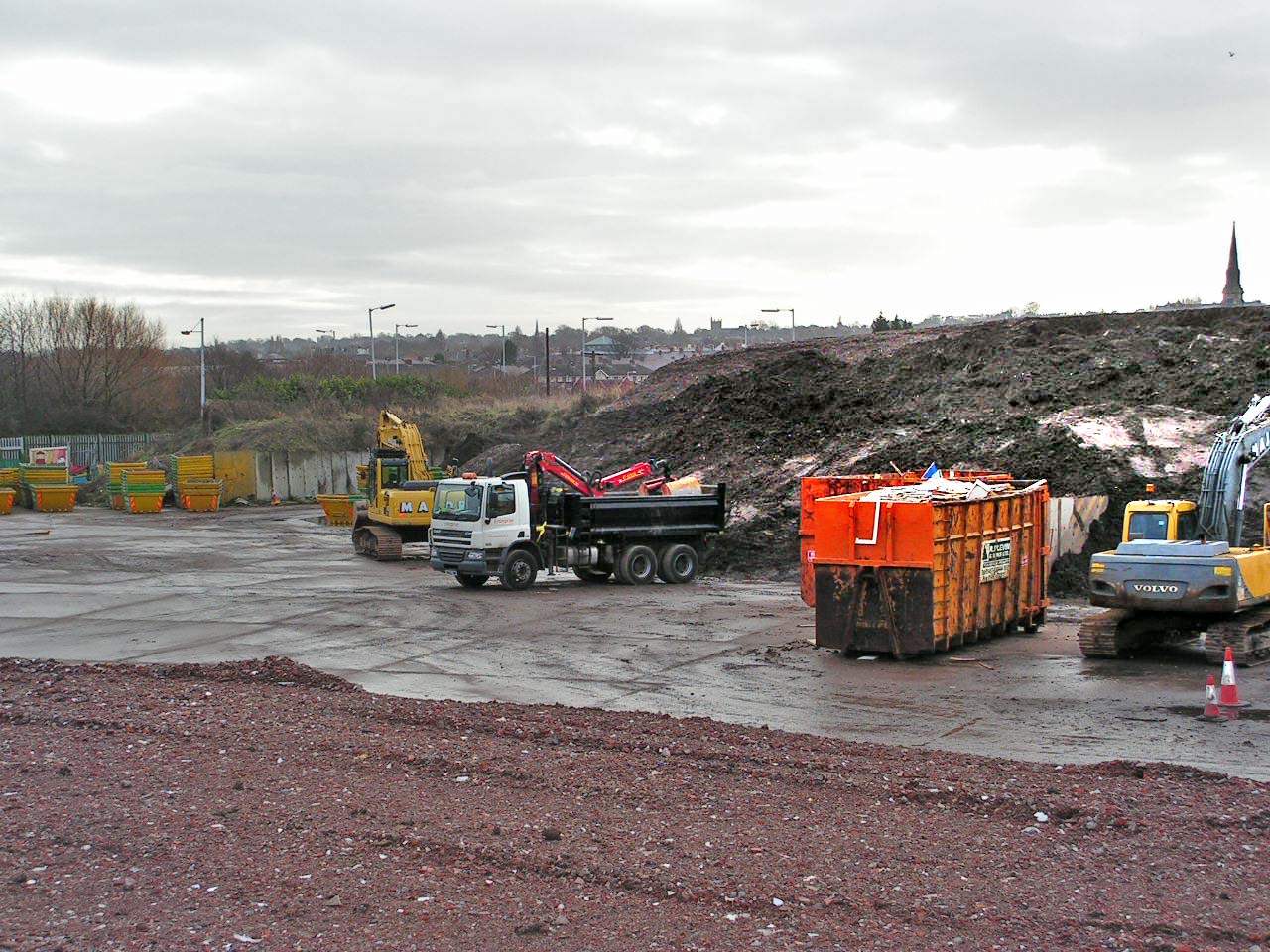
.jpg)

 In the summer of 1867 there was much criticism of the line in the local press. The last departure from Hoylake was at 7.00pm which was considered to be too early. During the second half of 1867 only 67,000 passengers were carried. The HR had many creditors and struggled to make its payments. On 13 February 1869 it went into receivership.
In the summer of 1867 there was much criticism of the line in the local press. The last departure from Hoylake was at 7.00pm which was considered to be too early. During the second half of 1867 only 67,000 passengers were carried. The HR had many creditors and struggled to make its payments. On 13 February 1869 it went into receivership.  Construction of the tramway commenced on 22 April 1873 and it opened on 6 September 1873. The tramway passed to the east of the station, running along Wallasey Bridge Road, and then turned sharply to the west, terminating on the north side of the station platform. A roof was provided over the tram terminus and cross-platform interchange allowed passengers to transfer easily between the two modes of transport. Birkenhead Dock station was probably the world’s first rail-to-tram interchange station.
Construction of the tramway commenced on 22 April 1873 and it opened on 6 September 1873. The tramway passed to the east of the station, running along Wallasey Bridge Road, and then turned sharply to the west, terminating on the north side of the station platform. A roof was provided over the tram terminus and cross-platform interchange allowed passengers to transfer easily between the two modes of transport. Birkenhead Dock station was probably the world’s first rail-to-tram interchange station. At the formation of the H&BR&TC an Act had been obtained to make two extensions to the line: at the western end a 1.225 mile line to West Kirby and, at the eastern end, a 330yd line to make a connection with the Birkenhead Dock railway. The latter was important to end the physical isolation of the railway. The West Kirby extension opened on 1 April 1878 and the dock connection on 19 July 1878. The latter passed to the south of Dock station and crossed Wallasey Bridge Road via a level crossing. The tramway crossed it on the level. West Kirby became the western terminus for passenger services from Birkenhead Dock station.
At the formation of the H&BR&TC an Act had been obtained to make two extensions to the line: at the western end a 1.225 mile line to West Kirby and, at the eastern end, a 330yd line to make a connection with the Birkenhead Dock railway. The latter was important to end the physical isolation of the railway. The West Kirby extension opened on 1 April 1878 and the dock connection on 19 July 1878. The latter passed to the south of Dock station and crossed Wallasey Bridge Road via a level crossing. The tramway crossed it on the level. West Kirby became the western terminus for passenger services from Birkenhead Dock station.  In 1882 the SH&DR obtained a further Act to build a 2.235 mile line to New Brighton.
In 1882 the SH&DR obtained a further Act to build a 2.235 mile line to New Brighton. 
 On 1 July 1891 the Wirral Railway (WR) was formed and it became the owner of the Birkenhead Park – West Kirby and the New Brighton lines. The WR developed its locomotive depot at the original Birkenhead Dock station. Alterations were made and sheds erected. The roof over the tram terminus was converted into a locomotive shed. At grouping on 1 January 1923 the WR became part of the London, Midland & Scottish Railway (LMS). Under the LMS the locomotive depot at Birkenhead Dock became 6A Birkenhead North. It survived until 12 March 1938 when electric services were introduced onto the West Kirby and New Brighton lines. The original station platform and buildings of 1866 survived until the closure of the shed but were demolished shortly after. The land became an area of sidings until the early 1990s, latterly being a coal depot.
On 1 July 1891 the Wirral Railway (WR) was formed and it became the owner of the Birkenhead Park – West Kirby and the New Brighton lines. The WR developed its locomotive depot at the original Birkenhead Dock station. Alterations were made and sheds erected. The roof over the tram terminus was converted into a locomotive shed. At grouping on 1 January 1923 the WR became part of the London, Midland & Scottish Railway (LMS). Under the LMS the locomotive depot at Birkenhead Dock became 6A Birkenhead North. It survived until 12 March 1938 when electric services were introduced onto the West Kirby and New Brighton lines. The original station platform and buildings of 1866 survived until the closure of the shed but were demolished shortly after. The land became an area of sidings until the early 1990s, latterly being a coal depot. 
.jpg)
.jpg)
.jpg)

 Home Page
Home Page